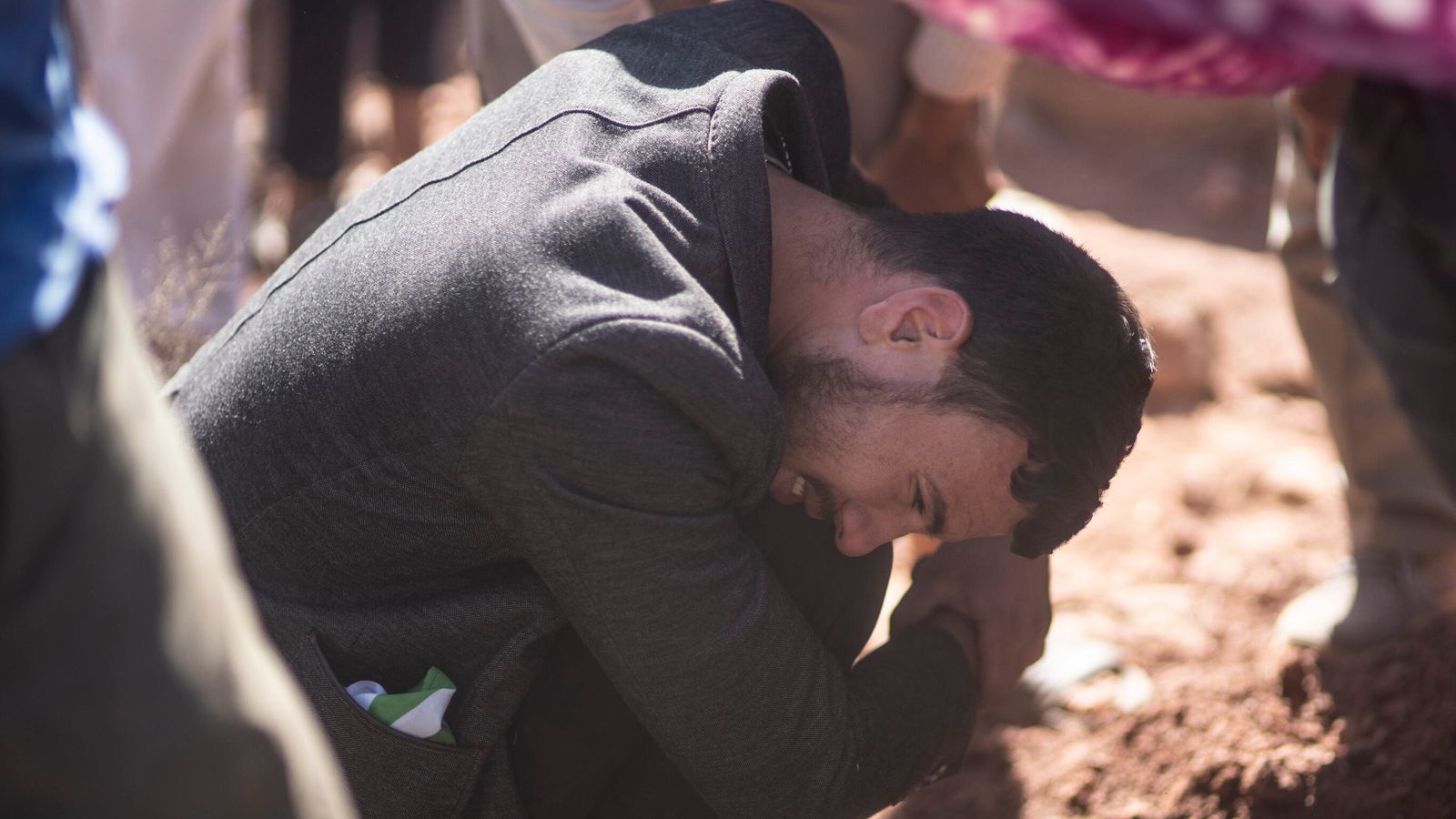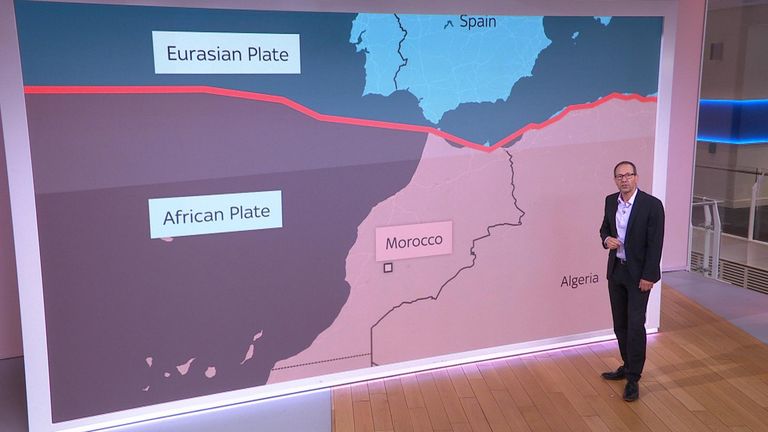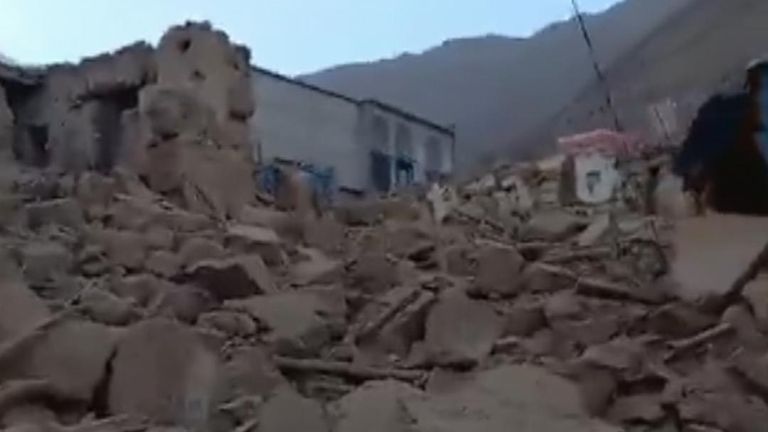There are two sides to Marrakech now.
On the one hand, the city is still bustling and chaotic – a home to many tourists. There were plenty of people walking around the centre, or enjoying a drink and a meal.
But dig a little deeper and there are scars. Everyone has a story of where they were, and how it felt when the earthquake happened.
Next 48 hours are ‘critical’ – latest updates
The Koutoubia mosque, one of the city’s best-known landmarks, shook violently. The minaret is now cracked across the corner at the top. As we filmed, we saw a group of worshippers praying outside. The mosque, for the moment, is not safe to enter.
Outside, groups of people are preparing to sleep overnight in the square. Either their homes are too badly damaged or, more likely, they are fearful of the damage that could be wreaked by another tremor. Some of them have been ordered out of their homes by the police.
Read more:
Morocco’s deadly earthquake – in pictures
We see a restaurant that was badly damaged by the earthquake. Then, the following morning, the cracks widened and most of the ground floor collapsed into rubble. Fortunately, the upper storeys remained in place.
We find another mosque, popular with tourists, that looks like it has been ripped open – the top smashed, the bottom completely intact. And in its shadow, a car that has been crushed by falling rubble. It is a fearful microcosm of just how deadly these earthquakes can be – one moment, the car was simply parked; the next, it is almost flattened.
In Marrakech, there is a structure in place – functioning emergency services and city authorities. The rubble is being cleared up; the injured are in hospital.
But up in the mountains, it is a different picture – towns and villages that are remote and hard to reach in the best of times are now almost inaccessible. And that is where the chaos and pain has still to be addressed.
This story originally appeared on Skynews



